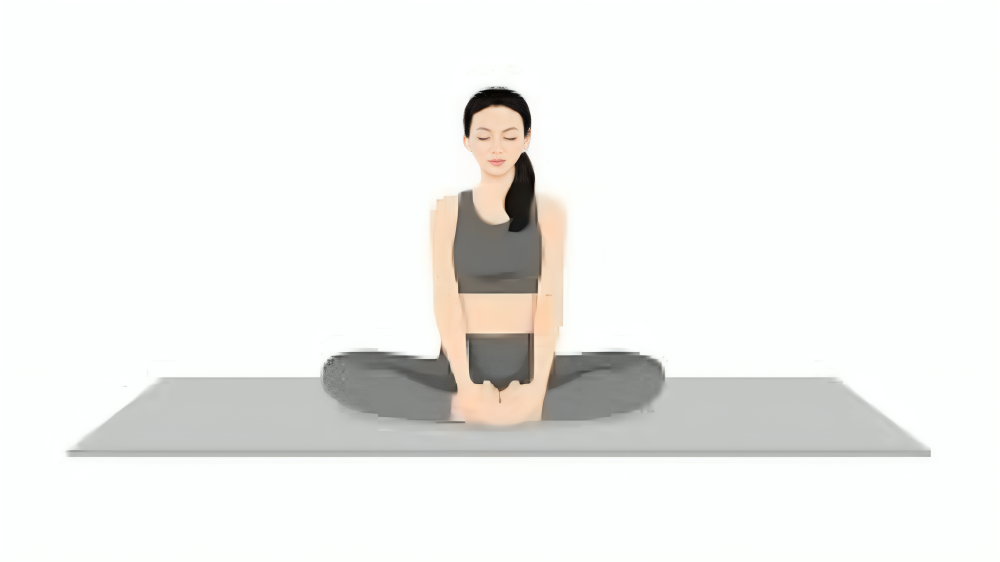
What is baddha konasana
Baddha Konasana, also known as the Bound Angle Pose or Butterfly Pose, is a popular yoga posture that involves sitting with the soles of your feet together and your knees bent, allowing them to fall out to the sides. The name “Baddha Konasana” comes from Sanskrit, where “Baddha” means “bound” or “tied,” and “Kona” means “angle.” This pose is known for its ability to open up the hips, stretch the inner thighs and groin, and promote relaxation.
How to Do Baddha Konasana
Find Your Seat:
Start by sitting on the floor with your legs extended straight in front of you. If your hips are tight, you might want to sit on a folded blanket or a yoga block for more comfort and support.
Bring the Soles of Your Feet Together:
Bend your knees and bring the soles of your feet together, allowing your knees to fall out to the sides. Draw your heels in towards your pelvis as close as is comfortable for you.
Hold Your Feet:
Use your hands to hold onto your feet or ankles. You can interlace your fingers around your toes if that feels natural.
Lengthen Your Spine:
Sit up tall, lengthening through your spine. Imagine a string pulling the crown of your head upwards. Avoid rounding your back; keep your chest open and shoulders relaxed.
.Engage the Thighs:
As you hold the pose, gently press your knees towards the floor using the strength of your thigh muscles. Don’t force it – just let gravity do its job.
Breathe and Hold:
Close your eyes and take deep, steady breaths. Hold the pose for about 30 seconds to a minute, or longer if it feels good. Focus on relaxing your hips and thighs with each exhale.
Release the Pose:
To come out of Baddha Konasana, slowly straighten your legs out in front of you, and give them a gentle shake to release any tension.
Benefits of Baddha Konasana
Opens Up the Hips:
Baddha Konasana is a fantastic hip opener. It helps increase flexibility in the hip joints, which is especially beneficial if you spend a lot of time sitting, as tight hips can lead to discomfort and lower back pain.
Stretches the Inner Thighs:
This pose provides a deep stretch to the inner thighs, groin, and knees. It’s a great way to release tension in these areas and improve overall leg flexibility.
Improves Posture:
Sitting upright in Baddha Konasana encourages good posture by strengthening the muscles that support the spine. Regular practice can help reduce slouching and improve your overall posture.
Eases Stress and Anxiety:
Like many yoga poses, Baddha Konasana can be incredibly calming. The combination of deep breathing and gentle stretching helps to activate the parasympathetic nervous system, which can reduce stress and anxiety levels.
Stimulates the Abdominal Organs:
The forward bend in Baddha Konasana gently massages the abdominal organs, promoting better digestion and aiding in the detoxification process.
Helps During Pregnancy:
For pregnant women, Baddha Konasana can be beneficial in preparing the body for childbirth. It helps open the hips and can relieve some of the discomfort associated with pregnancy. However, it’s always best to consult with a healthcare provider before practicing yoga during pregnancy.
It’s here Ardha Matsyendrasa how to do it and what are the Benefits
FAQs
1. Can beginners practice Baddha Konasana?
Absolutely! Baddha Konasana is suitable for all levels, including beginners. Just remember to use props if needed and don’t push your body too hard.
2. How often should I practice Baddha Konasana?
You can practice this pose daily or as often as you like. It’s especially beneficial if done after a long day of sitting or as part of your regular yoga routine.
3. What should I do if I feel pain in my knees?
If you experience knee pain, try placing a cushion or folded blanket under each knee for support. If the pain persists, it’s best to consult with a yoga instructor or a healthcare professional.
4. Can I practice Baddha Konasana during pregnancy?
Yes, but with caution. This pose can be beneficial during pregnancy, but it’s important to practice it gently and with the guidance of a qualified instructor. Always consult your healthcare provider before starting any new exercise during pregnancy.

